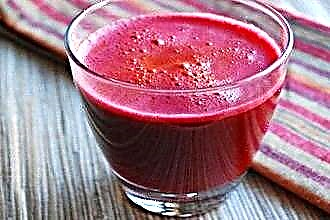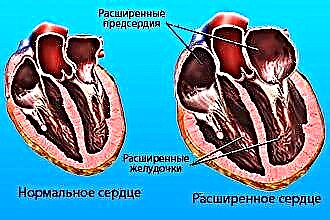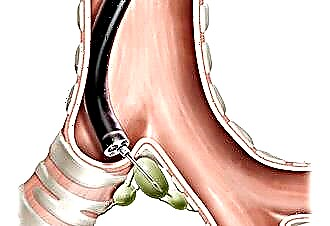Despite the fact that the modern treatment of maxillary sinusitis is based on the use of strong drugs based on chemicals and antibiotics, there is always room for funds that rely on the forces of nature. Treatment of sinusitis with beet juice is one of the most famous and affordable at home.
Strengths of using beets for sinusitis
 One of the most unpleasant symptoms of sinusitis is an abundant discharge of mucus, which worsens the quality of life and delivers a lot of unpleasant sensations.
One of the most unpleasant symptoms of sinusitis is an abundant discharge of mucus, which worsens the quality of life and delivers a lot of unpleasant sensations.
Most often, patients follow the simplest path - vasoconstrictor drugs are dripped, which have unpleasant side effects - they dry out the mucous membranes, reduce the elasticity of the vascular walls, which leads to nosebleeds.
However, for many years there has been a well-known simple and safe recipe for treatment - the use of beetroot juice for sinusitis.
It is prescribed as a quality adjunctive therapy in the main traditional treatment. Beetroot juice has a pronounced anti-inflammatory and bactericidal effect, is rich in useful substances:
- organic acids;
- fiber;
- nitrogenous compounds;
- microelements;
- vitamins.
Beetroot juice for sinusitis is used in different forms: as an integral part of solutions for rinsing the nasopharynx or as nasal drops. It slows down the multiplication of pathogenic bacteria, reduces swelling, loosens mucus, stimulates the regeneration of affected tissues and restores the epithelial layer of the nasal mucosa. With these properties, beetroot juice can in some cases replace synthetic mucolytics and antiseptics, as well as certain hormonal drugs.
Beets for sinusitis are also good because they have practically no serious contraindications and addictive effect, which is very convenient for treating children and pregnant women. Also in favor of the root crop is the low price and the ability to purchase it in any grocery store or in the market. According to some reports, the most active product is from a dark red oblong root vegetable, the so-called "calico" beet is ineffective.
Popular recipes for medicines with beets
 Making a beetroot-based product is very simple. The juice is squeezed out with a grater or juicer, the main thing is to first wash the vegetable and cut the peel off so that dirt does not get into the finished product.
Making a beetroot-based product is very simple. The juice is squeezed out with a grater or juicer, the main thing is to first wash the vegetable and cut the peel off so that dirt does not get into the finished product.
Only freshly squeezed liquid from raw, boiled or baked root vegetables is used.
The most famous recipes that are found in many collections of traditional medicine:
- This method works well with a large amount of sinus discharge. Strain freshly squeezed juice of raw beets through cheesecloth so that no suspension remains, dilute with an equal volume of boiled water or sodium chloride. Instill 3 drops into the nasal passages four times a day. Also, this biologically active liquid can be used as a lotion for catarrhal sinusitis: a cotton swab moistened with it is inserted into the nostril for 20 minutes. Juice from raw root vegetables can be stored in the refrigerator for no longer than a day.
- In the same way as in the previous recipe, the prepared raw materials are diluted with water in a 1: 1 ratio to a volume of 200 ml, then a spoonful of bee honey is introduced into the solution. The resulting agent is washed out the nose according to the standard procedure or instilled into the nasal passages.
A mixture of carrot and beet juice and fresh honey is being prepared. One part of the mixture is mixed with two parts of water, dripped into each nostril, 2 drops three times a day. This recipe helps well in the case of lingering sinusitis with a cold.
- Wash a medium-sized vegetable thoroughly and bake in the oven for 30 minutes, then peel, cool, squeeze and strain. The resulting liquid in pure form, without diluting, should be dripped into the nasal passages for a week for children, 3 drops each, and for adults - 8. To enhance the effect, the nose is warmed up for half an hour with dry heat (using a heating pad or a heated bag with cereal or salt).

- Fresh juice is kept in a warm place for about a day until it begins to ferment. Fermented beets have a softer effect on mucous membranes, so they can be used without decreasing concentration. It is dripped daily 3 times and is used for sluggish sinusitis.
Often, multiple rinsing of the nasal cavity with a decoction of beets or juice from a boiled vegetable is prescribed. It is a reliable remedy for rhinitis accompanying sinusitis.
Features of the use of beets in the treatment of sinusitis
When preparing a medicinal liquid using a grater or juicer, you should always let it settle a little, and then strain it through several layers of gauze or a fine sieve. If the substance is too thick, it will be inconvenient to carry out therapeutic manipulations with it, in addition, unpleasant feelings in the nose will arise. Raw beets in their pure concentrated form cause a burning sensation in the nasal cavity in many patients, therefore, in order to avoid this, it is better to dilute them with cooled boiled water or saline solution purchased from a pharmacy. Before use, the raw material must be kept in the refrigerator for 3 hours.
Before instilling or injecting a moistened turunda, you need to rinse the nasal passages with saline and blow your nose well. In the presence of severe internal edema, you cannot do without the preliminary use of vasoconstrictor drugs 10 minutes before the procedure. If this is not done, then there will be no possibility of free circulation of medicinal solutions in the nasal cavity, which will make them ineffective.
However, no matter how ardent an adherent of the folk recipe a person is, it is impossible to use beets as monotherapy for maxillary sinusitis. Despite all the useful properties of this vegetable, it can only serve as a natural and harmless addition to antibiotic therapy and the use of other drugs based on chemical compounds. It is rational to use traditional medicine only at the early catarrhal stage of the disease or at the stage of recovery. Acute and purulent forms are treated with pharmacological agents or surgical methods.
Despite the relative harmlessness, when treating young children using this technique, you need to be very careful, since certain problems may appear:
 a sharp increase in the volume of exudate secreted;
a sharp increase in the volume of exudate secreted;- allergic reaction;
- burning sensation inside the nose;
- deterioration of the general condition, characterized by difficulty breathing, lethargy, increased temperature;
- in very rare cases, against the background of a decrease in blood pressure, fainting is possible.
For any of these symptoms, treatment should be urgently interrupted, rinsed with a simple saline solution and consult a doctor for advice.


 a sharp increase in the volume of exudate secreted;
a sharp increase in the volume of exudate secreted;

